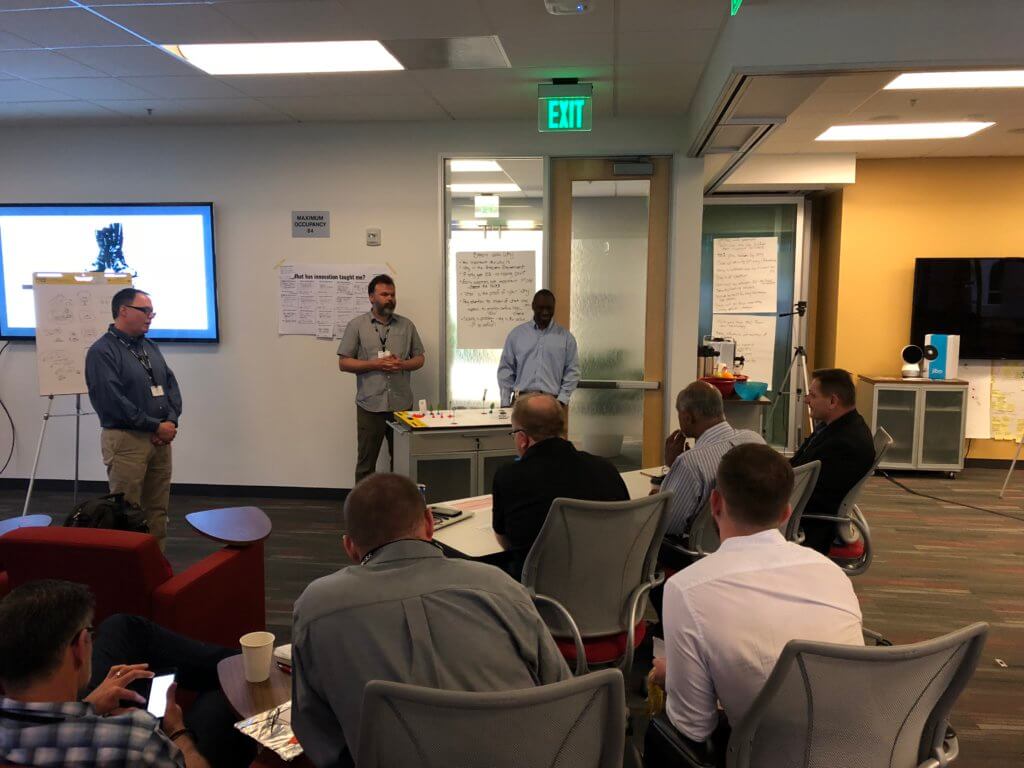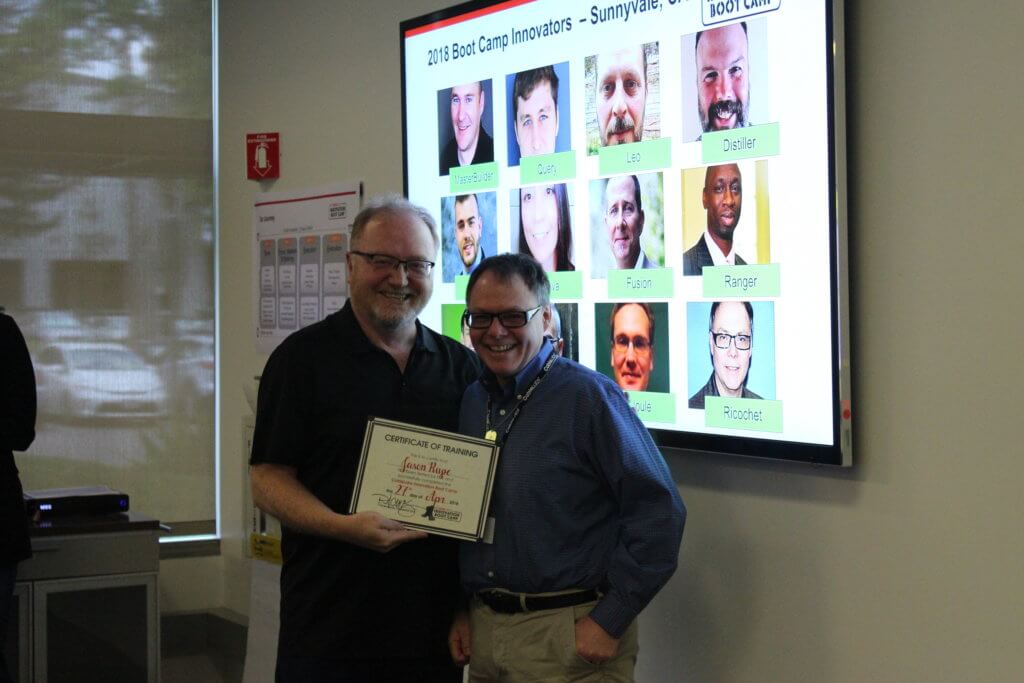Events
Come Along for the Ride: Innovation Boot Camp

Innovation is difficult. A full 95 percent of consumer products fail. Plus, the innovation process is highly unreliable, so we need every advantage we can get. In just three and a half days at the CableLabs Innovation Boot Camp, my team and I found a way to change all that. Yes, they were long days, and we had to make efficient use of that limited time. But 95 percent? We considered that an opportunity!
You Might Think
My part of the project pitch—the ultimate goal of Innovation Boot Camp—started off with a statistic that was just as surprising as that 95 percent figure, which was the number of people who could seriously benefit from the use of autonomous vehicles—if they were made to be safe. About 15 percent of the world’s population is disabled, and many of them could benefit from autonomous vehicles in some way (but also could be more easily harmed by them). Then again, everybody could significantly benefit from automated vehicles, so that percentage rises to 100 with a little change in perspective! Doing a bit of research and framing a problem with real statistics is something I learned a long time ago in high school debate. But it’s a corner I often cut, as I think many of us do. Innovation Boot Camp reinforced that important aspect, which is critical to solving an important problem.
As for our pitch—it went very well! We got fantastic feedback, and the Q&A session afterward quickly generated further great ideas. A key feature of the boot camp was Phil McKinney teaching attendees about innovation antibodies. I listen to his podcast regularly, so I had heard of the concept before. But it was during Innovation Boot Camp that I realized those antibodies were real—and they were inside me! I’m not talking about autonomous bots in my system, and I’m not referring to the autonomous vehicles and robotics at the core of our focus at Innovation Boot Camp. Rather, to me, innovation antibodies mean that I could talk myself out of taking the needed risks to execute on innovation. Thankfully, I recognized their presence, so I could deal with them directly— an important step! I really came away with confidence that I could overcome those innovation antibodies. Our successful pitch demonstrated that nicely. But just the evening before, I wasn’t so sure.
Drive
I remember preparing for our final pitch. We had driven our project far in just a few days, and we had successfully followed the innovation process. We were coached on what elements belonged in our pitch to sell it well, and we were learning about the hard part: execution. Our idea had merit! (Of course, every team at Innovation Boot Camp could confidently say the same thing.) We knew to focus on the “why.”
Executive Director of UpRamp Scott Brown gave us great pointers; I’m sure he was proud of us! But even as the teams were getting ready to frame their pitches and were forming their use case stories, we were also learning from Ryan Wickre and Scott Thibeault about design practices, and how excellent companies like Frog Designs solve tough design problems.
Learning is a constant at Innovation Boot Camp. Our dinner one night was a live Q&A session at the Computer History Museum. After looking over the technology that touches our topic area for our innovation project (autonomous vehicles), we enjoyed a live session with a few seasoned entrepreneurs who shared a lot of wisdom with us:
- Mark Varrichionne, CEO of Innovators Network;
- Kym McNicholas, Editor at Large, Corporate Innovators Series; and
- Phil McKinney, CEO of CableLabs.
That evening was all about gaining both knowledge and wisdom! When I first arrived at Boot Camp, I knew almost nothing about autonomous vehicles, but after that evening, I knew more than enough to innovate in that market space. And I was already learning the steps required to innovate well. We were motoring!
I’m in Touch with Your World
As my team prepared its pitches, I thought about the time we spent enjoying food and drinks with our target market: the early adopters. When it comes to focusing ideas on an innovation area, I learned just how important it is to know the target market. And that takes having real, frank conversations with those users. Our coaches and subject matter experts found actual early adopters in Silicon Valley and steered them to us so that we could ask them questions. What we learned that night heavily influenced our innovation project and convinced me that not knowing a target market is a highly significant innovation mode of failure.

While talking with early adopters of robotics, drones, and autonomous vehicles, my team and I learned a great deal that helped us focus the chaos of ideas we’d brainstormed earlier. We spent most of that day learning how to innovate and rank our ideas. It’s amazing how quickly you can generate excellent ideas for problem-solving. Bringing our individual ideas to the team, grouping them, enhancing them, and developing them from that point resulted in some exciting opportunities! Although I had some experience going through this process, Innovation Boot Camp introduced me to concepts such as the scamper method, as well as proven methods for ranking ideas.
Idea generation and ranking were reinforced throughout the boot camp. Think of it as driver’s education for innovation. Each day, Phil McKinney told us to get our books out to generate and rank ideas about an identified problem. Framing the problem was also important, and having some skills reinforced on that first step was essential. This kind of daily practice takes only a few minutes, but it brings great value!
Let’s Go
Zero to sixty in no time! We were already talking to innovation experts on the first day of boot camp, even getting a presentation from Aditya Kaul through a remote presence robot. We toured autonomous vehicle research facilities. Time went by quickly, even though the days were long. Innovation Boot Camp started exactly the way you’d expect: a rapid learning experience that established a strong foundation from which to innovate. We saw:
- The challenges of the autonomous vehicle space
- Learned what companies were working on, and understood where their biggest challenges were
- And at the same time, we were already learning about framing, ideation, ranking, and execution—also known as the FIRE process
When the Boot Camp began, I wondered what it would be like. Was I going to learn enough about autonomous vehicles to actually come up with a good idea? Was I going to learn anything new that would help me step up my innovation game? Could I find a way to take what I learned back to my team and bring more value to CableLabs and its members? Was I going to crash?
Just What I Needed
As I received my certificate on the final day, I knew my time wasn’t wasted, and the return on my investment was high. I had a wonderful time! But it wasn’t just because the food was great or because the location was right. The event staff were fabulous, the topic was interesting, the content was solid, and my team members were fantastic. Our coaches really drove us to success; Lori Lantz, Dan Smith, Christian Pape, and Lisa Warther were great leaders. And Michelle Vendelin was the event master; she guides us and made the whole experience highly valuable! Although the process alone was completely worth the investment, the project outcome was hugely valuable too. I grasped a few new skills, I learned a process I can reference later, and I got some great ideas worth pursuing after the event. I can confidently replicate what I learned, and in fact, I’ve already done that in my job and in my personal life!

That 95 percent failure rate for innovation is low-hanging fruit. I can now assuredly do my part to lower that failure rate. Off to the races!
Our next Innovation Boot Camp is September 25-28 in Louisville, Colorado. The topic is Connected in Extreme Weather and Natural Disaster. Register now and don't miss the opportunity to learn a framework and new methods for Innovation that is repeatable and has led to incremental and breakthrough innovation for past attendees.


